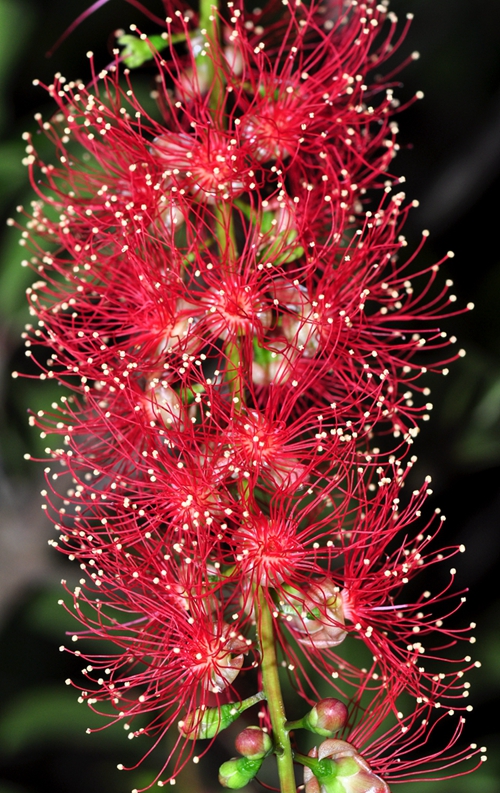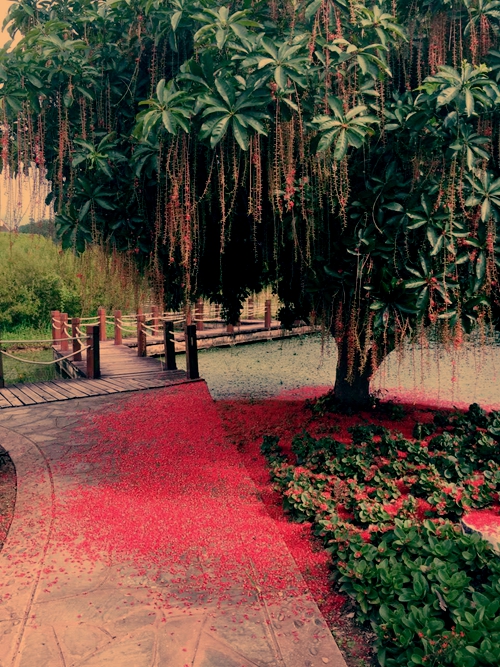Barringtonia racemosa (L.) Spreng is a tropical plant that belongs to the familyLecythidaceae. The tree grows wildly along fresh water swamps, lakes, riverbanks, shores of backwaters and the banks of paddy fields. The tree is approximately 4–8 m in height but can grow up to 15 m. It has large and wide leaves which are obovate-oblong to oblanceolate in shape.

Flower of Barringtonia racemosa (L.)

Barringtonia racemosa at Flower Garden of XTBG

Barringtonia racemosa at Flower Garden of XTBG

Barringtonia racemosa at Flower Garden of XTBG
Flowers attractive, white to pale pink, in many-flowered pendulous sprays; up to 60 cm in length or even more; bisexual; all floral parts in 4s; sepals joined at the base, separating in 3-4 lobes, green flushed with pink, about 10 x 7.5 mm; petal elliptic, up to 3 x 1 cm, attached to the staminal tube; stamens many, long, white or pinkish, forming a large central mass 3.5 cm in diameter; ovary 2 to 4 chambered; style red. Fruit conical to ovate, about 3 x 2 cm, crowned by the remains of the persistent calyx; style fleshy at first, later becoming hard, fibrous and yellowish-brown when mature. Seeds aromatic. The genus is named after the Hon. Daines Barrington, 1727-1800, an English nobleman, lawyer, antiquary and naturalist who wrote a book on English trees. The specific name ‘racemosa’ means ‘having racemes’; a raceme being a string-like arrangement of stalked flowers.
BIOLOGY
Half the flowers bloom simultaneously. Pollination of the fragrant flowers is generally by bats or insects (mainly moths), which are attracted to the copious nectar. After shedding the flowers, the inflorescences are often crowded with ants attracted by the nectar. A comparatively high percentage of the fruit is seedless. As the fibrous coat makes the fruit buoyant in water, it may be carried great distances.
ECOLOGY
B. racemosa, which is considered a mangrove associate, can also be found in tropical rainforest areas, open lowlands and thickets. Occurring always near water: along riverbanks and in freshwater swamps, and occasionally in the less saline areas of mangrove swamps, where it may develop pneumatophores. The species cannot tolerate even light frost. It favours the wet tropical, moist topical and wet subtropical climatic zones. It is distributed from eastern Africa and Madagascar to Sri Lanka, India, Myanmar, southern China, Taiwan, the Ryukyu Islands (Japan), Thailand, the Andaman and Nicobar Islands (India), throughout the Malesian region towards Micronesia, Polynesia (east to Fiji and Samoa) and northern Australia




